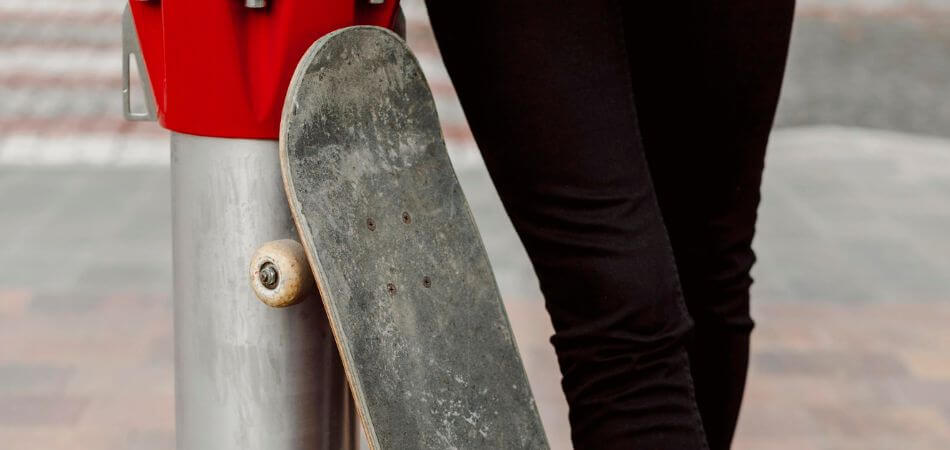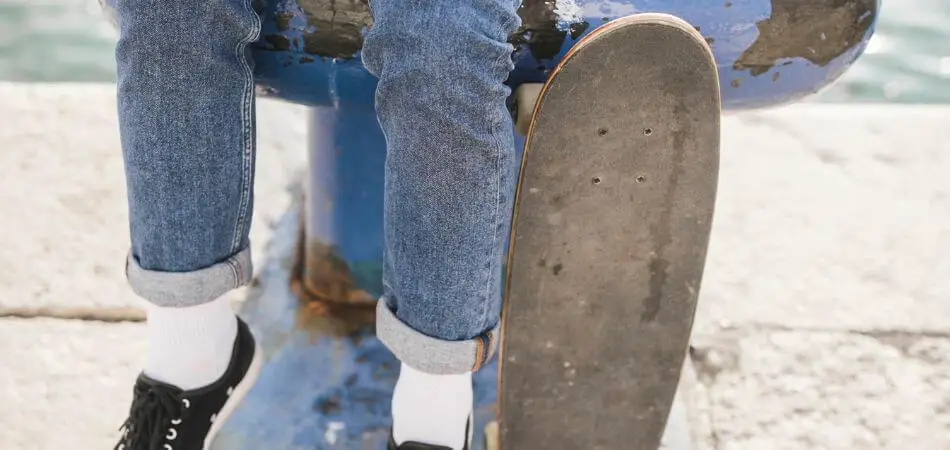To make skateboarding wax, melt a mixture of paraffin wax and oil. Use a double boiler to ensure even heating and prevent burning.
Are you tired of spending money on store-bought skateboard wax that barely lasts? What if you could create your own high-quality skateboard wax at home, tailored to your riding style? Learning how to make skateboard wax is not only cost-effective but also a fun and rewarding DIY project that can elevate your skating experience. Whether you’re grinding rails, sliding curbs, or just looking for smoother rides, this guide will walk you through the simple steps to craft your own skateboard wax using everyday materials. Get ready to take your skate game to the next level while saving cash and customizing your wax for maximum performance!
Why Wax Is Essential For Skateboarding
Skateboarding is not just about skills and tricks. To truly ride smoothly, wax plays a pivotal role. For every kickflip and grind, wax ensures the board slides effortlessly across surfaces. With the right wax, barriers like curbs and rails become stages for performance, not obstacles.
The Role Of Wax In Skateboarding
Imagine trying to slide on a surface as rough as sandpaper. Skateboard wax smooths this out, providing a slick layer between the board and the surface. This allows skaters to glide with ease and land tricks that would be otherwise difficult.
Importance Of Using The Right Wax For Different Types Of Obstacles
- Concrete wax: Stronger hold for rough surfaces.
- Metal wax: Soft, for smoother slides on rails.
- Wooden ramps: Often need special wax.
Selecting the correct wax tailored to the obstacle’s material is crucial for optimal performance and board protection.
Overview Of Commercial Skate Waxes And Their Common Ingredients
| Wax Type | Key Ingredients | Benefits |
| Paraffin-based Wax | Paraffin, Oils | Easy to apply, smooth slide |
| Beeswax Blends | Beeswax, Natural Oils | Eco-friendly, good grip |
| Plant-based Wax | Soy Wax, Essential Oils | Biodegradable, non-toxic |
Commercial skate waxes usually contain a blend of waxes and oils designed for optimum slipperiness and durability. Whether you opt for a sustainable choice like soy or a tried and true paraffin blend, the goal remains the same: enhancing your ride.

Basic Ingredients For Making Skateboard Wax
Ready to glide and slide with style? Creating your skateboard wax is simpler than you might think. With a few key ingredients, you can custom-make a wax that suits your skateboarding needs. Let’s break down the essential components for your DIY skateboard wax project.
Beeswax
Beeswax is the natural choice for eco-friendly skaters. It’s firm and provides excellent grip for those tricky moves. Ensure it’s pure and free from impurities for the best results. To use beeswax, follow these steps:
- Buy pure beeswax from a reliable source.
- Grate or chop it into small pieces for easy melting.
- Melt it down in a double boiler, stirring occasionally.
Paraffin Wax
Paraffin wax, a skateboard wax staple, gives a smooth finish and slick performance. It’s the go-to for many DIY wax creators. Here’s the use of paraffin wax:
- Available at craft and hardware stores.
- Often sold in blocks or pellets.
- Melt with care, as it’s flammable.
Additives
Add a personal touch to your wax with additives. They enhance performance and consistency. Common choices include:
| Additive | Benefit |
| Oil | Softens wax for better application |
| Coloring | Customizes the look of your wax |
| Scent | Adds a pleasant smell to your wax |
Remember, balance is key. Mix additives thoroughly for a uniform wax that performs as good as it looks.
Choosing The Right Wax Formula
Creating the perfect skate wax requires a blend of science and art. A good formula ensures your board slides smoothly across various surfaces. The right choice depends on the type of skateboarding you prefer. Let’s dive into how to choose the ideal wax formula.
Discussion On The Wax Hardness And Its Impact On Different Surfaces
Wax hardness affects how your board reacts to different surfaces. Here, we explore how to match wax hardness with skate surfaces:
- Soft wax: Best for rough surfaces. It spreads easier, creating a slick layer.
- Hard wax: Ideal for smooth surfaces. Lasts longer and prevents stickiness.
| Surface Type | Recommended Wax Hardness |
| Rough Concrete | Soft Wax |
| Smooth Metal | Hard Wax |
Tips On Experimenting With Different Wax Ratios For Optimal Performance
Testing various wax combinations ensures you find an ideal mix. Follow these tips for experimenting:
- Start with equal parts soft and hard wax.
- Adjust the ratio based on your experience.
- Note the temperature, as it may affect wax performance.
- Record the outcomes to refine your formula.
Remember: what works for a friend may not work for you. Trust your instincts, and alter the wax accordingly.

Step-by-step Guide To Making Skateboard Wax
Skateboarders know the right wax can make grinds and slides smooth as silk. Making your own skateboard wax is not only economical but also allows you to customize the blend. This do-it-yourself guide ensures skaters craft the perfect wax for their boarding needs.
Preparation
Gather materials before starting the wax-making process. You will need:
- Paraffin or soy wax
- Microcrystalline or beeswax (for added stickiness)
- Oil (like petroleum jelly) for smoothness
- Colorant (optional for custom colors)
- A mold or container to shape the wax
- A double boiler or two pots
Melting The Waxes
Use a double boiler to melt the waxes safely. The steps are simple:
- Fill the bottom pot with water and bring to a simmer.
- Place wax in the top pot or bowl.
- Stir occasionally as the wax melts evenly.
Adding Additives
Infuse the melted wax with oils and colorants for better performance and look:
| Additive | Function | Amount |
| Oil | Smoothness | 2-3 Tbsp |
| Colorant | Custom color | As desired |
Stir additives into the liquid wax until well mixed.
Pouring And Cooling The Wax
Pour the mix into molds or containers cautiously. Then, follow these steps:
- Allow the wax to cool at room temperature.
- Wait until wax hardens fully.
- Remove the wax from the mold.
After these steps, your skateboard wax is ready to use!
Testing And Using Homemade Skateboard Wax
Now that you’ve made your very own skateboard wax, it’s time to put it to the test. Proper testing and using your homemade skateboard wax will ensure your effort pays off with slicker grinds and smoother slides. Let’s explore the steps for checking consistency, applying the wax to your skateboard, and evaluating its performance on various skateboarding surfaces and obstacles.Checking the Consistency
Checking The Consistency
First, let the wax cool down. Next, touch the wax with your fingertips. It should feel solid but not too hard. A good skate wax is firm yet malleable. If it’s crumbly or too soft, adjust the recipe and try again.
Applying the Wax to the Skateboard
Applying The Wax To The Skateboard
To apply the wax, start with clean skateboard rails or the ledge you plan to slide on. Rub the wax firmly against the edges in a back-and-forth motion. Cover all areas evenly for the best glide. Remember, less is more; avoid excessive waxing to maintain grip.
Evaluating the performance on different surfaces and obstacles
Evaluating The Performance On Different Surfaces And Obstacles
Finally, it’s time to hit the skatepark.
- Try your wax on various surfaces such as concrete, metal, or wood.
- Notice how your skateboard responds during a grind; smooth glide?
- Gauge the wax’s durability: Is it wearing off too quickly?
Don’t forget to ask fellow skaters to test it out. Get their feedback on the wax’s performance. Their insights can be incredibly valuable for refining your homemade wax formula.
Storing And Packaging
Perfecting the art of storing and packaging homemade skate wax sets the foundation for a better skateboarding experience. After crafting a batch of wax, the right storage methods ensure it remains effective and usable over time. Let’s dive into the smart ways to keep skate wax ready for action.
Tips On Storing Homemade Skate Wax For Longevity
Keep your skate wax in top condition with these simple storage tips:
- Avoid direct sunlight to prevent melting.
- Store wax in a cool, dry place.
- Use airtight containers to keep out moisture and dirt.
- Label your skate wax with the date made for freshness tracking.
- Small batches work best to ensure usage before it gets old.
Storing skate wax correctly makes it last longer. It helps maintain the consistency and quality you need for smooth slides and grinds. Wrap individual pieces of wax in wax paper before placing them in a container. This way, they don’t stick together.
Frequently Asked Questions Of How To Make Wax For Skateboarding
What Can You Use As Skate Wax?
Skate wax can be store-bought or homemade using paraffin, beeswax, or a candle. These substances help reduce friction on grinding surfaces.
Can You Use Vaseline As Skate Wax?
Yes, Vaseline can be used as a substitute for skate wax in a pinch. It helps reduce friction on rails and ledges, similar to traditional skate wax.
Can You Use Soap As Skate Wax?
Yes, you can use soap as a substitute for skate wax, but it may not be as effective and can wear off quickly.
Do You Need Skate Wax?
es, skate wax is needed to reduce friction on grinding surfaces, making tricks smoother and helping to protect the skateboard’s deck and trucks.
What Ingredients Are Needed For Skateboard Wax?
Homemade skateboard wax typically requires paraffin or beeswax, petroleum jelly, and oil, such as coconut or vegetable oil.
Conclusion
Crafting your own skateboard wax is simpler than it sounds. With just a few ingredients and steps, you’ve got a slick tool to enhance your skateboarding experience. Remember to experiment with different oils for variety, and always practice safety when melting and molding your wax.
Hit the pavement with your homemade creation and enjoy a smoother ride!






